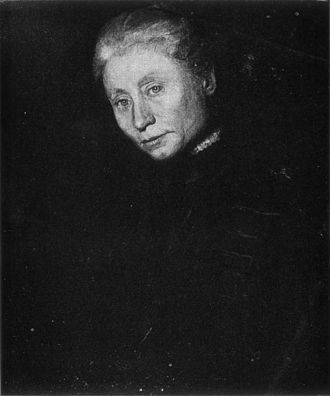Miss Mitchell’s Students: Elizabeth Rebecca Coffin
Standing under the canopy of the stars, you can scarcely do a petty deed or think a wicked thought.
Maria Mitchell’s influence reached far and wide and remained strong through many generations of not just her own students but the students of her students. Her immediate galaxy was of course the women who took her astronomy and mathematics classes at Vassar College. She instilled in her students a lifelong love of learning and the knowledge that as women, they had the power, strength, and knowledge to be the future of women scientists and educators in the world. Some would go on to great accomplishments and some would go on to quietly influence other young learners of the world – spreading Maria’s legacy farther afield.
Over the next few blogs, I would like to share with you some of Maria Mitchell’s students.
The fifth, and final in this series, is:
Elizabeth Rebecca Coffin, 1850-1930
Born in Brooklyn, New York to Nantucket Quakers and reared in a Quaker household, Elizabeth or “Lizzie” attended Quaker schools. She entered Vassar College and enrolled in Maria’s astronomy classes, becoming close to Maria and her father. Nantucket was not the only connection for these three – they were also distant cousins. Lizzie was a classmate and became a good friend of Mary Whitney. When she graduated from Vassar in 1870, she furthered her schooling in the 1870s at the Royal Academy of Art in The Hague where she was among the first women to be accepted. Several tours through Europe with family, tutelage under many fine artists of the nineteenth century, and friendships with the artist Thomas Eakins, William Merritt Chase, and others provided Coffin schooling in the arts. Through her membership in the Art Students League of New York, the Brooklyn Art Club, and the Brooklyn Art Guild, of which she was president, Lizzie became acquainted with artists from around the world. Her connections, her schooling, and her talent led to participation in major exhibitions throughout the country.
Lizzie made frequent trips to Nantucket, until she built a house on Lily Street in 1900. She returned to New York often, but preferred to call Nantucket her home. Eakins was among many artists who would visit her on Nantucket. During the extended visits, Lizzie continued to paint but also took on many new activities, particularly in support of the island and its people.
She was active in founding the Nantucket Maria Mitchell Association, as well as the Goldenrod Literary and Debating Society (a group for island girls), the brainchild of Sara Winthrop Smith. Perhaps because of Lizzie’s friendship with Smith and her close friend Gertrude King (teacher and principal at the Coffin School), and her family ties to the school, she was instrumental in putting the Coffin School back on its feet. The school had closed in 1898 due to lack of funds and a dwindling student population. Coffin’s efforts to redevelop the school as a center for manual-training courses in conjunction with the public schools was what helped to revive it. With the founding of the Coffin School Association and with the help and support of the Coffin School Trustees, Lizzie’s dream was realized and the school reopened in 1903.
Her work on behalf of the school greatly increased its endowment, and she was influential in establishing the home economics program for Nantucket girls. Lizzie’s Vassar College schoolmate, Ellen Swallow Richards, was a champion of the home economics movement in schools and partially funded the program on Nantucket. Ironically, although Lizzie continued to paint, she was better known to islanders as a champion of island causes than as an artist. Today, many of her works are in the collection of the Coffin School Trustees.
JNLF
Recent Posts





